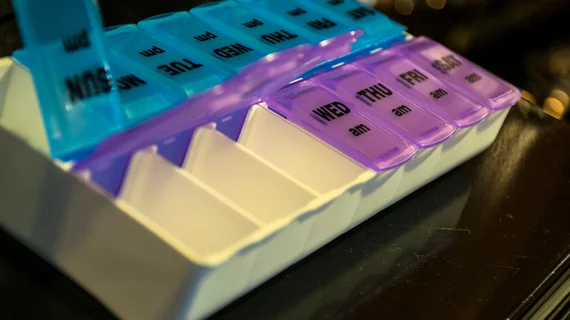Too much Tylenol? Daily acetaminophen use may be bad for hypertension patients
Daily acetaminophen use may put hypertension patients at a heightened risk of cardiovascular disease, according to a new analysis published in Circulation.[1]
“The significant risks of acetaminophen in overdose are well-known,” wrote first author Iain M. MacIntyre, PhD, a specialist with National Health Service Lothian in the United Kingdom, and colleagues. “However, considerable uncertainty remains regarding the safety of chronic acetaminophen use at therapeutic doses because of reliance on observational data and cohort studies that often have conflicting results.”
MacIntyre et al. aimed to learn more about acetaminophen’s potential impact on a patient’s blood pressure (BP) over time. The PATH-BP Study included data from 110 adult hypertension patients who were randomized to either receive 1 gram of acetaminophen or a placebo four times per day for two weeks. After a two-week “washout” period, all patients were crossed over to the trial’s other treatment arm. The study lasted from September 2014 to June 2019.
Overall, daily acetaminophen use was associated with a “significant increase” in daytime systolic BP and daytime diastolic BP.
For patients in the acetaminophen group, the mean daytime systolic BP increased from 132.8 mm Hg to 136.5 mm Hg. In the placebo group, the mean systolic BP increased actually decreased from 133.9 mm Hg to 132.5 mm Hg. The mean daytime diastolic BP among patients in the acetaminophen group, meanwhile, increased from 81.2 mm Hg to 82.1 mm Hg. Patients from the placebo group again saw a slight decrease, with their mean daytime diastolic BP shifting from 81.7 to 80.9.
These findings, the team wrote, suggest that daily acetaminophen use is associated with BP increases that raise cardiovascular risk and give clinicians a reason to consider the safety of this common medication for certain high-risk patients.
MacIntyre and colleagues did point out that their study included “a relatively small sample size” and “very specific patient population.” However, they emphasized that these findings still present clinicians with some noteworthy data.
“The findings of our study further call into question current guidelines suggesting that acetaminophen is a safe alternative to nonsteroidal anti-inflammatory drugs (NSAIDs),” the authors wrote. “Indeed, the rise in BP seen in this study matches that seen with NSAIDs, and may well explain the finding that self-reported frequent acetaminophen use in women is associated with an increase in cardiovascular events similar to that seen with frequent NSAID use. While the precise mechanism of actions of acetaminophen remain unclear, it is believed to involve COX2 (cyclooxygenase-2) inhibition which may, at least in part, explain these similarities.”
The team also noted that caution should be recommended when considering prescribing the “regular use” of acetaminophen to patients with hypertension or who may otherwise already face a heightened risk of certain cardiovascular issues.
Related Heart Health Content:
New data on the link between diabetes and high blood pressure
Hospitals seeing more patients with uncontrolled blood pressure
Patients prefer to monitor their blood pressure from home
Hypertension cases skyrocket around the globe
Reference:

